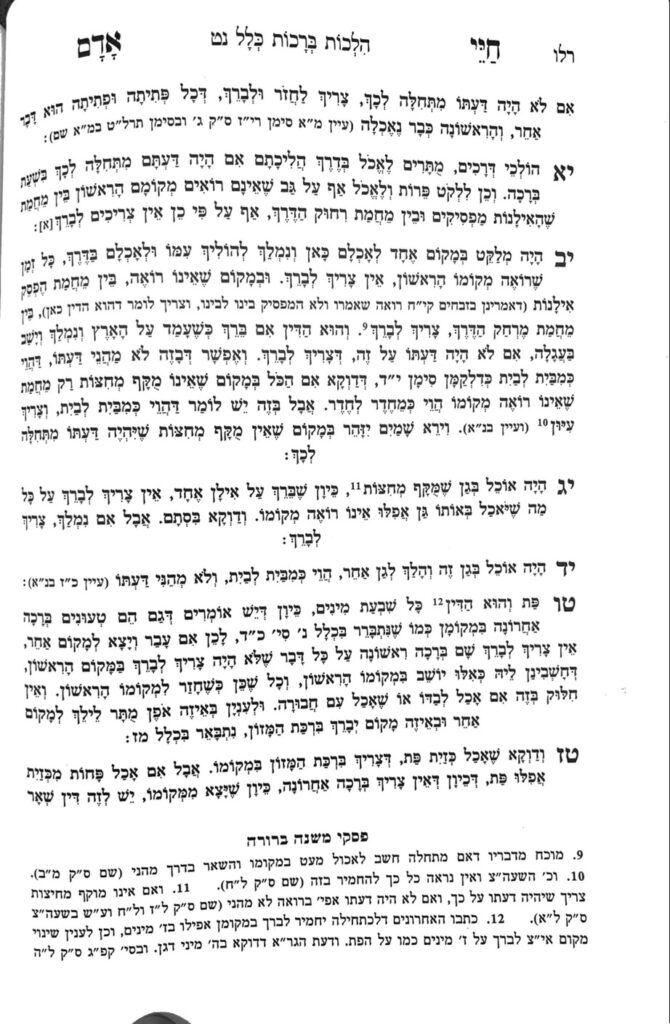We are continuing in siman 11. We learned that one traveling does not need to make a new bracha, as they do not have a specific makom, so they do not effect a shinui makom by moving elsewhere.
The Chayei Adam continues discussing one who does not have a specific makom. He writes that, similar to one traveling, if one is picking fruits in a field, a bracha they make will cover them throughout the entire field. If there is an enclosure, their bracha will only work within the enclosure. If there is no enclosure, their bracha works even if the person cannot see their original makom, as long as they are still in the field. Thus, we see that when one begins without an established makom, their movement does not create a shinui makom, and their original bracha will cover them throughout the entire area.
However, that is in a scenario where he intended to walk around, pick fruits and eat, without regard to a specific place. In siman 12, the Chayei Adam writes that if a person had intent to eat in one part of the field, and then changed their mind and decided to eat in a different part of the field, the concept of shinui makom will apply, because the eating session began with a decision to eat in a specific makom.
In determining where and at what distance from the original makom the shinui makom takes effect, we have no rooms, walls or house to take into consideration. Therefore, the Chayei Adam writes to consider ro’eh mekomo, whether one can still see that original part of the field or not, as we learned regarding the mishkan (see shiur 1143). If he can still see the place where he started, he may eat without a new bracha, However, if one can no longer see the original place, whether due to the distance or due to something blocking their view, they will need a new bracha.
The Chayei Adam explains that the source for the halacha that something blocking the line of vision to the original makom will create a shinui makom is learned from the Gemara in Zevachim, as we have learned previously (shiur 1143)
The Mishnah Berurah points out that the above scenario is only considered a shinui makom because the person had originally decided to eat in a specific part of the field, and then changed their mind. However, if one’s original intent was to eat a little in one place and continue eating throughout the rest of the field, their original place is not considered a makom, so they do not create any shinui makom by moving throughout the field and would not need a new bracha.
This case is different from beginning in a house and moving outside, where one would need to make a new bracha, because beginning in a house is considered more of a permanent makom, so moving outside is considered a shinui makom.
Summary
- One who is actively traveling does not need to make a new bracha between each bite. Similarly, one who is moving within an area (such as a field) does not need to make a new bracha between each bite.
- If the area is enclosed, their bracha extends throughout the enclosure.
- If the area is not enclosed, their bracha extends throughout the entire area, even if they cannot see the original place in which they made the bracha.
- However, if one made their bracha with intent to remain in a specific makom, and changed their mind, their bracha will only extend as long as they can see the original makom.
- If something is blocking their view, such as a tree, they will need to make a new bracha.



